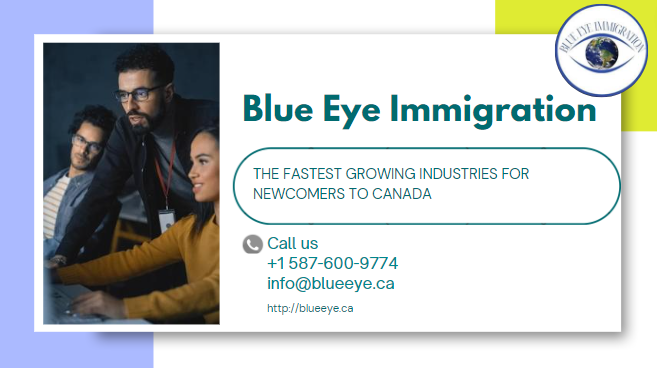Canada is known for having a stable and strong economy. Post-pandemic, the country has seen a strong rebound in several sectors, many of which are seeing rapid growth.
One of the key factors in Canada’s continued economic growth is the country’s high immigration targets. The Immigration Levels Plan 2023-2025 shows that Canada will admit 500,000 immigrants a year by the end of 2025.
Out of Canada’s population of over 39,000,000 people, almost 25% identify as immigrants. Newcomers typically arrive in Canada well-suited to fill gaps in the national labour force caused by a large number of retirements or a lack of qualified candidates.
Among employment sectors, some stand out as the fastest growing with the most in-demand skills.
Healthcare
Canadians are living longer and require more medical care for a longer period than in previous generations. This increased demand has Canada’s provinces working hard to attract healthcare workers from abroad. Currently, over 35% of Canada’s physicians, 23% of registered nurses and 39% of dentists are immigrants.
According to the latest job vacancy data from Statistics Canada, as of February 2023, the number of job vacancies in the healthcare industry is the highest across all sectors at 143,800 vacant positions. The nursing sector was particularly hard hit during the pandemic which caused many nurses to require extended leave or to quit the profession altogether.
Immigration Refugees and Citizenship Canada (IRCC) has been taking steps to make it easier for healthcare workers to become permanent residents such as removing some of the barriers for physicians who were previously considered to be self-employed. Self-employed occupations are not typically eligible for Express Entry.
How to immigrate as a healthcare worker
Many healthcare workers arrive in Canada through an Express Entry program. Express Entry programs target high-skilled candidates in the Federal Skilled Worker Program, the Canadian Experience Class, or the Federal Skilled Trades Program.
Also, because healthcare is a provincial responsibility, most provinces have streams for healthcare workers under the Provincial Nominee Program (PNP). For example, Alberta recently created the Dedicated Healthcare Pathway under the Alberta Express Entry Stream.
Other provinces regularly hold PNP draws targeting candidates in healthcare occupations. British Columbia does this type of draw nearly every week and Ontario recently invited 2,349 healthcare candidates through its Human Capital Priorities stream.
There are also two federal pilot programs for caregivers for seniors and children. Earlier this year the government announced that the work experience in Canada required for a caregiver to qualify for permanent residence through these programs was reduced from 24 to 12 months.
Agriculture
Canada’s agriculture sector employs over 243,000 Canadians and currently has a job vacancy rate of more than 14,000.
A recent report by the Royal Bank of Canada shows that by 2033, 40% of Canadian farm operators will retire. The report also says that to offset a short-term skills crisis, Canada must accept 30,000 permanent immigrants over the next decade to establish their own farms and greenhouses or take over existing ones.
How to immigrate to Canada with an agricultural occupation
To fill some of these positions, IRCC recently announced that it is extending the Agri-Food Pilot Program and removing occupational caps. Eligible occupations include:
- Retail butchers
- Industrial butchers
- Farm supervisors and specialized livestock workers
- Food processing labourers
- General farm workers
- Harvesting labourers
Like healthcare workers, there are also dedicated streams under some PNPs for agriculture workers.
Tech
One of the main components of the federal budget 2023 was investing $20 billion to support the building of major clean electricity and clean growth infrastructure projects. This investment is likely to lead to increased demand in the tech sector.
It also notes that many of the careers in the clean technology manufacturing sector do not require a university degree, and the average worker compensation in this sector in 2021 was $90,252—well above Canada’s economy-wide average of $69,311.
The growth of the AI sector also plays a part in Canada’s demand for tech workers. Invest in Canada, a government website designed to attract investment in Canada’s tech industry, reports that Canada has 1,032 AI and machine learning companies. In addition, the Global AI Index shows that Canada ranks 4th for its global competitiveness in AI implementation, innovation, and investment.
How to immigrate to Canada with a tech occupation
To bring in more tech workers, IRCC offers programs like the Global Talent Stream. This program is part of the Temporary Foreign Workers Program and is designed to encourage the growth of Canada’s tech industry. The program aims to achieve a processing standard of two weeks once the final application is submitted by the potential employee.
There are also targeted draws through the Provincial Nominee Program. Some examples of provincial tech streams include the BC Tech Stream, OINP Tech Draw, Saskatchewan Tech Talent Pathway, and the Alberta Accelerated Tech Pathway.


